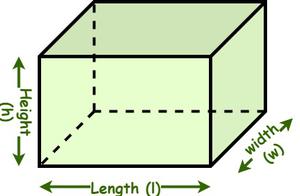Apply Now
Effective Strategies for Paraphrasing in MLA Style
In today's academic landscape, the ability to paraphrase effectively while adhering to MLA style is crucial for maintaining academic integrity. Paraphrasing involves rephrasing ideas from scholarly sources without altering their original meaning, which is essential in scholarly writing. This technique not only showcases your comprehension of the material but also contributes to a coherent narrative within your research papers.
Understanding paraphrasing is fundamental for scholars, as it aids in synthesizing multiple sources and integrating evidence into their writing. Moreover, mastering this skill enhances overall writing fluency and coherence, elevating the quality of academic discourse. In this article, we’ll explore effective paraphrasing techniques specific to MLA format, the importance of citation, and practical tips to refine your editing skills.
By leveraging the guidelines set forth by MLA for source attribution, students and researchers can uphold academic standards while avoiding plagiarism. The following sections will delve into the key methods of paraphrasing and offer insights into effective writing practices that improve readability, argument development, and thesis clarification.
Understanding MLA Guidelines for Effective Paraphrasing
With the rise of digital resources, it is essential to familiarize yourself with MLA guidelines governing scholarly writing. This adherence not only bolsters academic integrity but also demonstrates respect for intellectual property. The Modern Language Association (MLA) provides a structured framework for citations which is vital for source evaluation and attribution.
Basic Principles of MLA Paraphrasing
MLA format requires precise attention to detail when paraphrasing. First, you must ensure that the rephrased content maintains the essence of the original text. This involves altering sentence structure and word choice while avoiding direct quotations unless necessary. It is beneficial to break down complex sentences into simpler components for clarity.
Additionally, effective paraphrasing in MLA necessitates proper in-text citation. This means acknowledging the original author within the text, usually through a parenthetical citation that includes the author's last name and page number, for example (Smith 23). This practice not only prevents plagiarism but also enhances the credibility of your arguments.
Citation Management and Tools
Utilizing citation management software can streamline the process of tracking sources and generating accurate citations. Tools like Zotero or EndNote help researchers manage bibliographic data and format citations in compliance with MLA guidelines. By integrating these tools into your writing process, you can focus more on content originality and less on formatting.
Another aspect of effective paraphrasing is the use of paraphrase tools, which can assist in generating alternative phrasings. However, these tools should be used cautiously. They can serve as a helpful starting point, but students must ensure that the final product reflects their voice and understanding of the material.
Peer Review and Feedback Mechanisms
Engaging with peers or utilizing writing centers for feedback on your paraphrasing can yield beneficial results. Constructive critiques often expose potential areas for improvement in clarity and coherence. Writing workshops often provide insights into common pitfalls in paraphrasing, helping participants hone their editing techniques and strategies.
It's paramount that as writers, you recognize the importance of peer review loops, where feedback is used to revise and polish your work. This collaborative writing approach fosters an environment that values academic collaboration and enhances writing clarity through shared experiences.
Techniques for Mastering Paraphrasing
Building on the foundations of MLA guidelines, several strategies can help improve your paraphrasing skills. These techniques are not only useful for scholarly writing but also essential for developing a critical understanding of source material.
Textual Analysis for Improved Understanding
Engaging in thorough textual analysis is a precursor to effective paraphrasing. By breaking down the key points, arguments, and context of the source material, you can gain a deeper understanding that facilitates more nuanced paraphrasing. Consider annotative writing practices, where you jot down reactions, insights, or questions while reading. This process aids in synthesizing ideas and identifying the core message.
Moreover, practicing strengthening your argumentation techniques through paraphrasing can lead to clearer writing. By systematically rewriting sections of text, you can clarify your understanding and ensure a logical structure when integrating various sources.
Effective Thesis Clarification
Your thesis statement guides the direction of your paper, and effective paraphrasing should reflect and support this. As you draft different sections, continuously refer back to your thesis to ensure that the paraphrased content aligns with your argument. If the paraphrased material diverges from your thesis, consider revisiting either the content or the thesis itself to maintain consistency and relevance.
Maintaining Writing Fluency and Style Consistency
Paraphrasing should also foster writing fluency, meaning smooth transitions and a natural flow in your essay. Using varied sentence structures and word choices will enhance readability. Be mindful of maintaining a consistent tone and style throughout your work to strengthen your academic voice.
Engaging in exercises that challenge your writing mechanics, such as rewriting sections in different styles, can develop your fluency. Consider reading aloud to catch awkward phrasing or unclear thoughts, a method that can significantly improve text coherence and readability.
Enhancing Readability through Paraphrasing
As you develop your academic writing, remember that clarity is paramount. Paraphrasing serves not only to avoid plagiarism but also to distill complex ideas into more accessible language.
Common Mistakes to Avoid in Paraphrasing
Writers often fall into the trap of paraphrasing too closely to the original text, leading to unintentional plagiarism. To avoid this, focus on truly reinterpreting ideas in your own words rather than just swapping out synonyms. Additionally, neglecting citation can undermine your academic integrity, so ensure you provide proper attribution regardless of how much you have altered the original wording.
Evidence Integration and Argument Development
Strong paraphrasing should also contribute to effective argument development. As you incorporate paraphrased material, strive to weave it seamlessly into your narrative. When synthesizing sources, clarify how each piece of evidence supports your claims or enhances your analysis. This promotes logical reasoning and strengthens your overall argument.
Finalizing Your Work with Revision Strategies
Once you have drafted your work, revisions are essential to polish your writing. Utilize feedback loops and collaborative writing techniques to refine your content. Focus on editing for clarity, checking for consistency in citations, and ensuring that your paraphrased sections align with your thesis.
By employing thorough revision strategies, you can enhance your writing’s effectiveness, making it suitable for publication in peer-reviewed journals and contributing original insights to academic conversations.

Q&A: Common Questions about Paraphrasing in MLA Style
What is the difference between paraphrasing and summarizing?
Paraphrasing involves rewording specific passages while maintaining the original length and detail, whereas summarizing condenses the main points into a shorter format. Both techniques are important for scholarly writing but should be used appropriately based on the context.
How can I check my paraphrasing for plagiarism?
Utilizing plagiarism detection tools, such as Turnitin or Grammarly, can help ensure that your paraphrased content is original. These services compare your text against a vast database to identify any potentially problematic passages.
What are some effective paraphrasing exercises?
Engaging in exercises like rewriting passages in different styles, summarizing key concepts, or practicing with peer-reviewed articles can help strengthen your paraphrasing skills. These activities promote a deeper understanding of source material and enhance your editing abilities.

Conclusion: Cultivating Paraphrasing Skills in Scholarly Writing
In conclusion, effective paraphrasing in MLA style is an essential skill for scholars aiming to engage in meaningful academic dialogue. By understanding and adhering to citation guidelines, employing robust paraphrasing techniques, and refining your writing fluency, you contribute to the integrity of scholarly communication. Remember, the goal is to cultivate originality while respecting the contributions of others, ensuring that your work is not only academically sound but also enriched with critical thinking. With consistent practice and the right strategies, you can enhance your writing quality and uphold ethical writing practices in your academic career.


